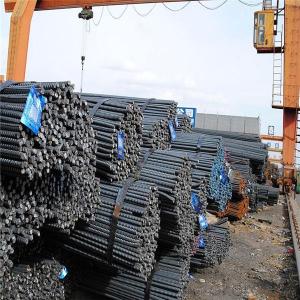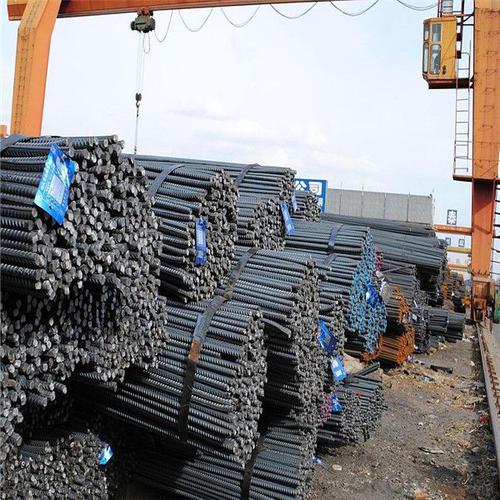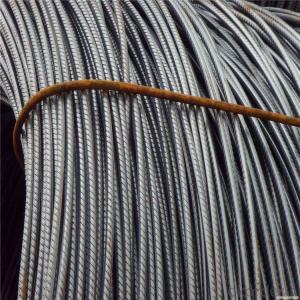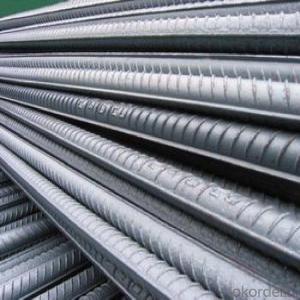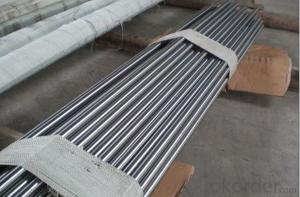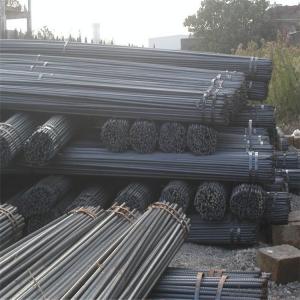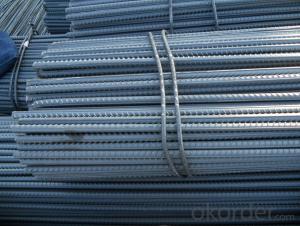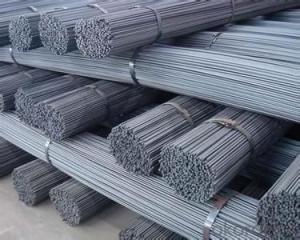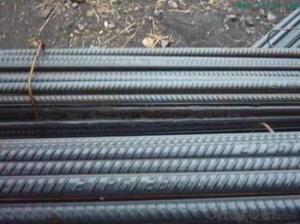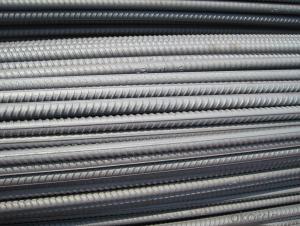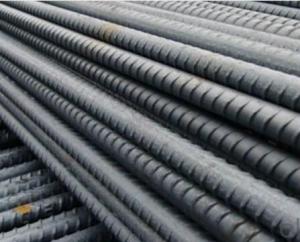Steel rebar Grade HRB400 for Construction
- Loading Port:
- China main port
- Payment Terms:
- TT OR LC
- Min Order Qty:
- 100 m.t.
- Supply Capability:
- 19000 m.t./month
OKorder Service Pledge
OKorder Financial Service
You Might Also Like
Specification
Steel rebar is metal bars often used in construction for pouring concrete or supporting walls and columns. The rebar can
be smooth, though they are frequently manufactured with deformations that create greater texture to which concrete can
adhere, creating a stronger bond that helps prevent cracking of concrete. These deformations do not create weaknesses in
the rebar, and when rebar is measured to determine its diameter, it is typically measured at the narrowest point. Strength
grades indicate the amount of pressure the steel rebar can withstand, and grade and diameter are typically presented in both
imperial and metric units.
Features
1、Pure steel quality, stable chemical contents, small tolerance.
2、Constant Quality, good drawing performance.
3、High dimension accuracy degree, accuracy degree of Level C up to 80%, smooth surface, less scale, easy to be pickled.
4、Automatic bundling with 4 lines by Machine in tidy and good looks
5、Big high quality percentage, small coil percentage, and heavy coil weight for Hard Coil.
6、High sorbitizing percentage.
Product Description :
Chemical composition (%): | Steel | C | Si | Mn | P | S | Ceq | ||||
HRB335 |
0.25 |
0.80 |
1.60 |
0.045 |
0.045 | 0.52 | |||||
HRB400 | 0.54 | ||||||||||
HRB500 | 0.55 | ||||||||||
Mechanical properties | Steel | Rel/ MPa | Rm/ MPa | A/ % | Agt/ % | ||||||
≥ | |||||||||||
HRB335 | 335 | 455 | 17 |
7.5 | |||||||
HRB400 | 400 | 540 | 16 | ||||||||
HRB500 | 500 | 630 | 15 | ||||||||
Package: | Standard export packing or as customer's request | ||||||||||
Application: | Construction, building, bridge, road. ect | ||||||||||
Payment terms | 1).100% irrevocable L/C at sight. | ||||||||||
Delivery time | 15-30 days after receipt of L/C or deposit by T/T | ||||||||||
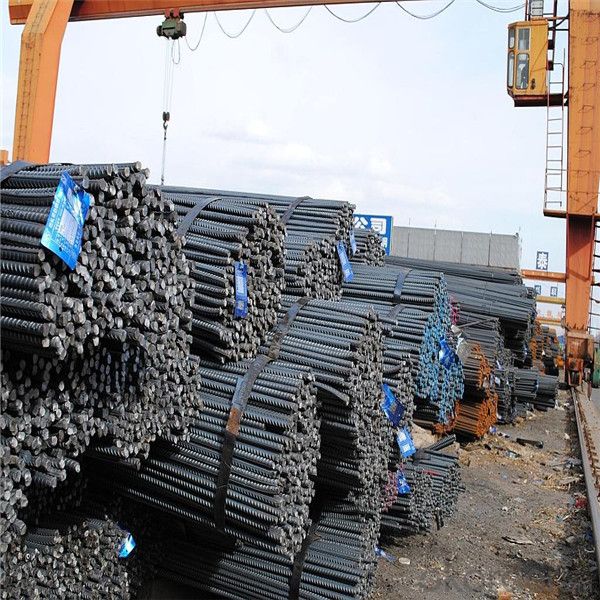
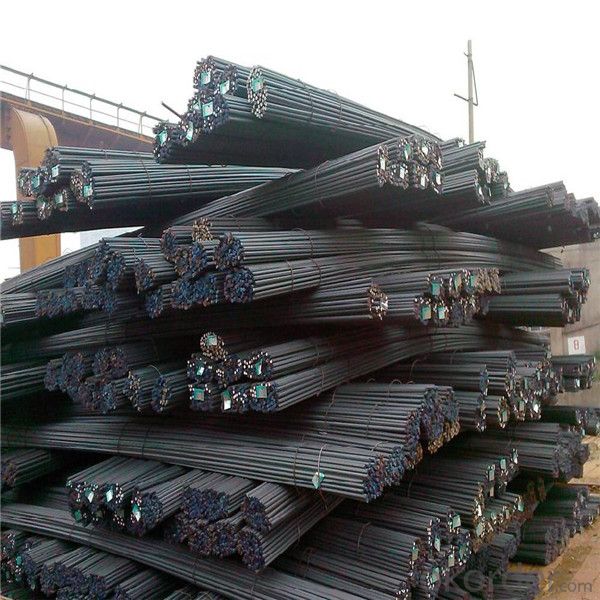
Packing:
In bundles, each bundle weight 3.5 tons. Load by container or by bulk verssel.
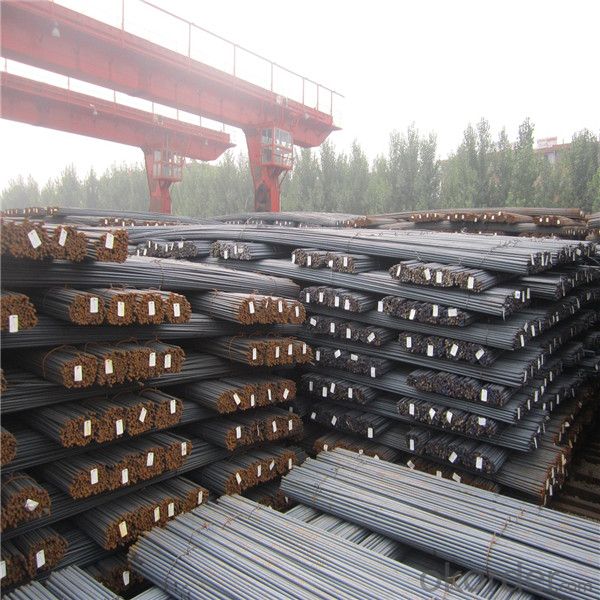

Our service
(1) We cooperate with famous factories with advanced equipment and well trained workers.
(2) We can provide factory price with trading company service.
(3) We continuously work on the improvement of our processes, guaranteeing consistently high standards
of quality to keep none compensation.
(4) We guarantee 24 hours response and 48 hours solution providing service.
(5) We accept small order quantity before formal cooperation.
(6) We deliver the agreed quality at the agreed time, reacting to changes in customer wishes in a flexible way.
(7) Due to our volume and selling power, we have excellent freight rates with shipping lines.
(8) We strive to always be fair and honest in our dealings with customers.
(9) We strive to work together with customers to achieve much more than we can achieve alone.
(10) Through our passion and commitment we aim to be a market leader in all our key markets. To maintain
our position as market leader we must continue to add value in all that we do.
FAQ:
1.Q: What's your MOQ(minimum order quantity)?
A: One full container, mixed acceptable .
2. Q: What's your packing methods?
A: Packed in bundle or bulk ..
3. Q: How can I buy CNBM products in my country?
A:Please send us an inquiry or email ,we will reply to you if there is distributor in your country
4. Q: Can we visit your factory?
A: Warmly welcome. Once we have your schedule, we will arrange the professional sales team to follow up your case.
5. Q: How long does it take to get the product if i place an order?
A:With the process of your requirements,we will pack and deliver in 3-7 days. If it is by sea shipment,it will take 15-45 days depending on different locations
- Q: How are steel rebars handled and transported on construction sites?
- Steel rebars are typically handled and transported on construction sites using cranes, forklifts, or manual labor. They are usually bundled together and lifted using cranes or forklifts to designated areas. Workers may also carry smaller rebars manually. To keep them organized and prevent damage, rebars are often stored on racks or laid flat on the ground. Safety measures, such as wearing gloves and protective gear, are essential to ensure workers' well-being during the handling and transportation process.
- Q: Can steel rebars be used in architectural detailing?
- Yes, steel rebars can be used in architectural detailing. They are commonly used in reinforced concrete structures to provide strength and stability. Rebars can be shaped and arranged to create intricate architectural features and provide structural support where needed.
- Q: Are steel rebars suitable for use in structures with high resistance to chemicals?
- No, steel rebars are not suitable for use in structures with high resistance to chemicals.
- Q: What are the different types of steel rebars used in tunnel constructions?
- In tunnel constructions, various types of steel rebars are used to enhance the structural integrity and strength of the tunnels. These rebars are crucial components that provide reinforcement and stability to the tunnel structures. Here are some of the different types of steel rebars commonly used in tunnel constructions: 1. Mild Steel Rebars: Mild steel rebars, also known as black or carbon steel rebars, are the most commonly used type of rebars in tunnel constructions. They are cost-effective and possess adequate strength to meet the structural requirements of tunnels. 2. High-Strength Steel Rebars: High-strength steel rebars, also referred to as tension steel, have enhanced tensile strength, making them ideal for tunnel constructions where high load-bearing capabilities are required. These rebars are typically made from alloys such as ASTM A615 Grade 80 or ASTM A706 Grade 80. 3. Stainless Steel Rebars: Stainless steel rebars are corrosion-resistant and offer excellent durability in harsh tunnel environments. They are commonly used in tunnel constructions where corrosion protection is essential, such as in marine or coastal areas. 4. Epoxy-Coated Rebars: Epoxy-coated rebars are regular mild steel rebars with an epoxy coating applied to protect them from corrosion. They are commonly used in tunnel constructions where the tunnels are exposed to moisture, chemicals, or other corrosive elements. 5. Galvanized Rebars: Galvanized rebars are coated with a layer of zinc to protect them from corrosion. They are commonly used in tunnel constructions where the tunnels are exposed to moisture or in areas with high humidity levels. 6. Fiberglass Rebars: Fiberglass rebars, also known as GFRP (Glass Fiber Reinforced Polymer) rebars, are non-corrosive and lightweight. They are used in tunnel constructions where weight reduction is a critical factor or in areas with high electromagnetic interference. 7. Carbon Fiber Rebars: Carbon fiber rebars, also known as CFRP (Carbon Fiber Reinforced Polymer) rebars, possess high tensile strength and are corrosion-resistant. They are commonly used in tunnel constructions where high tensile strength and resistance to chemical or environmental degradation are required. The selection of the appropriate type of steel rebar for tunnel constructions depends on various factors such as load-bearing requirements, exposure to corrosion, environmental conditions, and project budget. Consulting with structural engineers or construction experts is advised to ensure the optimal choice of steel rebars for tunnel projects.
- Q: Why is the difference between left and right threads? What's the difference?
- The design direction of rotation screw steel, steel and related crystal. Due to crystal dislocation, under the tensile stresses along a surface slip between the crystal, for single crystal, slip surface and tensile stress direction angle of about 45, at the same time, the crystal will around the stress-induced rotation axis. According to the characteristics of steel, the surface of the reinforcement design into a spiral shape, can effectively improve the strength of steel, save materials, reduce the weight of the building. Of course, there are combined with concrete between considerations.
- Q: Are steel bars used more in high-rise buildings or steel?
- The State advocates the use of new steel grades and designs responsive to national policies.Xingang are screw steel, screw thread steel with multiRound bars are often used in stirrups
- Q: How do steel rebars affect the thermal properties of a structure?
- Steel rebars can increase the thermal conductivity of a structure, making it more prone to heat transfer.
- Q: How are steel rebars tested for quality assurance?
- Steel rebars are tested for quality assurance through various methods such as visual inspection, dimensional checks, and mechanical tests. Visual inspection involves examining the surface for any visible defects or irregularities. Dimensional checks ensure that the rebar meets the required size and shape specifications. Mechanical tests assess the strength, elasticity, and ductility of the rebars, including tensile and bending tests. These quality assurance tests help ensure that the steel rebars meet the necessary standards and are fit for their intended use in construction projects.
- Q: What is the maximum length of steel rebars that can be used in construction?
- The maximum length of steel rebars that can be used in construction varies depending on the specific project and structural requirements. However, standard lengths for steel rebars typically range from 6 meters (20 feet) to 12 meters (40 feet).
- Q: What is the process of galvanizing steel rebars?
- The process of galvanizing steel rebars involves immersing them in a bath of molten zinc to create a protective coating. This coating helps to prevent corrosion and extends the lifespan of the rebars. The steel rebars are first cleaned and prepared by removing any impurities or mill scale. Then, they are dipped into the zinc bath, where the zinc bonds with the surface of the steel through a metallurgical reaction. Afterward, the rebars are withdrawn from the bath, excess zinc is removed, and they are allowed to cool and solidify. The resulting galvanized rebars are ready to be used in construction projects, providing increased durability and resistance to environmental factors.
Send your message to us
Steel rebar Grade HRB400 for Construction
- Loading Port:
- China main port
- Payment Terms:
- TT OR LC
- Min Order Qty:
- 100 m.t.
- Supply Capability:
- 19000 m.t./month
OKorder Service Pledge
OKorder Financial Service
Similar products
Hot products
Hot Searches
Related keywords
